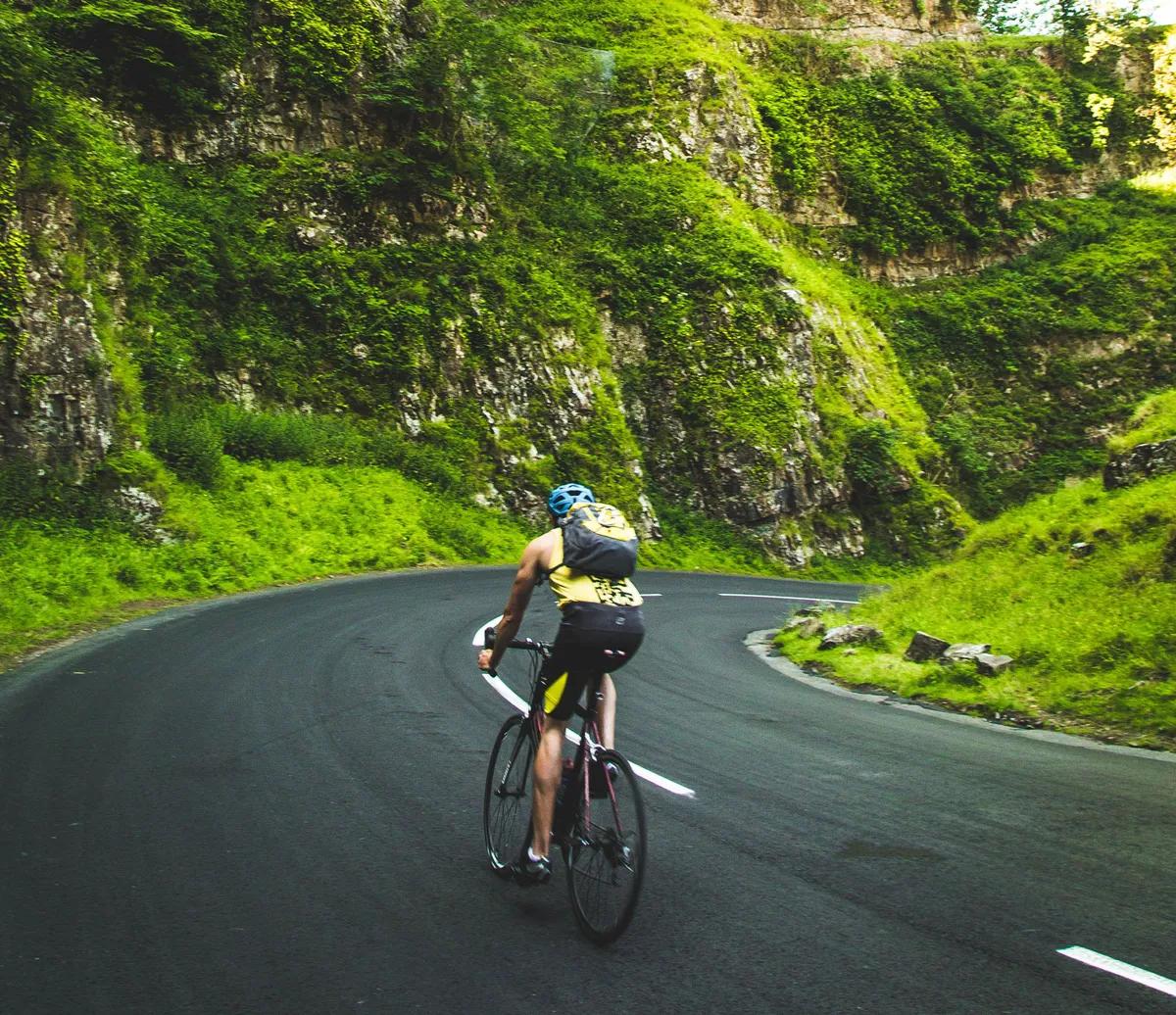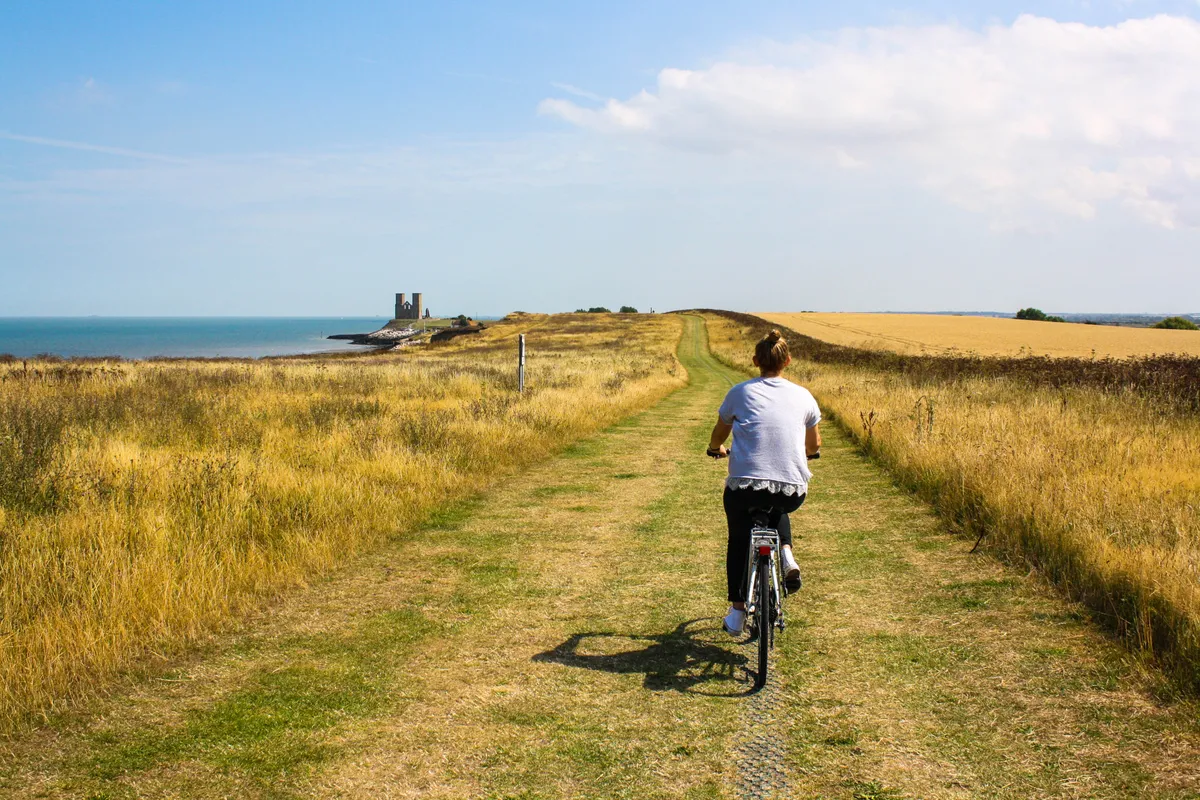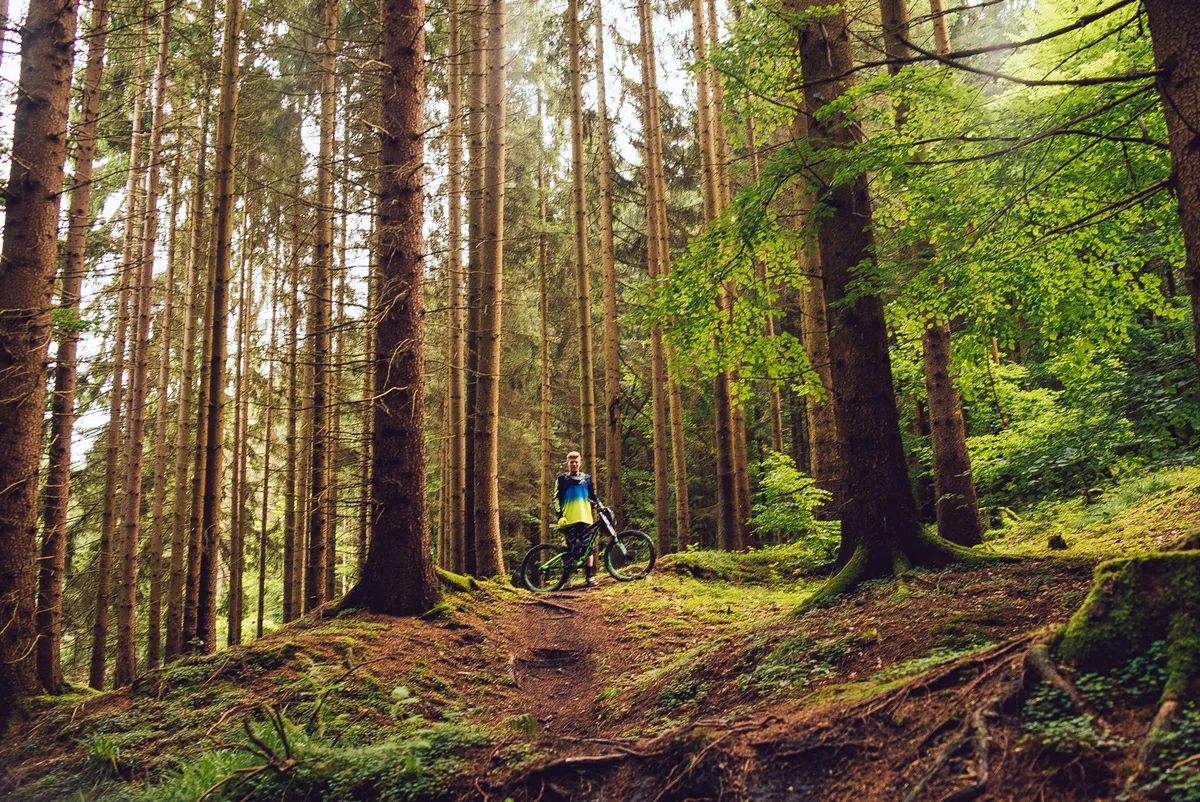If you feel like going for a ride, autumn is a brilliant time to get out on your bike. You don’t have summer’s heat to contend with and the countryside is at its most colourful. You can venture much further afield on a bike than you can on foot, with almost no extra effort, and it's a great way to spend time outdoors with family and friends.
If it’s been a few years since you last rode a bike, however, there may be a bit more effort required in terms of preparation. Don’t worry, this doesn’t mean months of training and squeezing into fluorescent Lycra. It just means making sure you know where you’re going and that you, and your bike, can make it there and back safely and comfortably…
How to choose a cycling route
There are hundreds of routes to choose from that cover the entire length and breadth of the country – usually with a pub or café stop along the way – and you can find a few ideas at the bottom of this page. But before you start picking desirable destinations to pedal off to you need to make sure you’re up to the journey.
The first question you need to answer is how far can you go? If it’s been a while since you last rode a bike, it’s best to be conservative – you want to enjoy the ride, not have it turn into a gruelling test of endurance. Ten miles each way may not sound like much but if it’s over a hilly route or rough terrain, it can become quite an undertaking. And if you have children cycling with you their smaller legs will tire more quickly.
Generally speaking, leisure-cycling routes won’t be too challenging but it’s worth checking the type of terrain you’ll be riding on – tarmac, footpath or towpath, for example – and how hard any hills you’ll encounter will be. Route guides usually provide this information but you can also find it on OS maps and GPX files used by GPS devices that are shared online.
What type of bike to ride: road, hybrid or mountain bike?
Any sort of bike will suffice for leisure cycling. You don’t need a state-of-the-art machine worth thousands of pounds, just something that’s reliable and comfortable. In other words, it should be a bike that you won’t mind sitting on for an hour or so at a time.
Aside from that all it needs to have are working brakes and gears, and tyres that are intact and inflated. If any of those things aren’t in working order and you don’t know what to do about it, book your bike in for a service at a bike shop.
A comfortable saddle is obviously important but your tyres will go a long way towards keeping you happy while you roll along. As a general rule of thumb, the wider your tyres and the lower your tyre pressures are, the better your bike will be at dealing with any bumps or rough terrain on the route. Tyre pressures are something of balancing act, however, and too little air in your tyres will make your bike sluggish, harder to steer and more prone to punctures. So check the recommended inflation range that’s embossed on your tyres’ sidewalls for a clearer idea of how much air you should be pumping into them.

What do you need to bring?
No bike is immune from punctures so at the very least, it’s a good idea to bring along a puncture repair kit. This could just be a spare inner tube, tyre levers (to prise the tyre off the rim), a pump and any tools needed to remove the wheel from the frame. All of this will easily fit into a small bag. A small bag is also handy for carrying your wallet, phone, keys and any other valuables you may decide to bring along, as it’s all too easy for things to fall out of pockets while you’re pedalling.
A ‘proper’ puncture repair kit, with glue and patches, is useful but makes for a more time-consuming repair, as you have to wait for the glue to dry and the patch to bond to the tube. If you’ve only got limited time for your ride, you’re better off swapping the punctured inner tube for a new one and bringing the damaged one home to fix later.
Either way, there’s no point bringing any spares and tools with you if you don’t know how to use fix a puncture. If you’ve never had to do it before (lucky you), you can follow BikeRadar's handy guide.
A couple of spanners and/or Allen keys are also useful for tightening any loose nuts or making adjustments on the go – raising or lowering your saddle, for instance. As are lights (white for the front; red for the back) if there’s a chance you might still be riding after sunset.
A lock is also wise if you’re going to leave your bike for any length of time, such as when you nip into a pub for some mid-ride refreshments.
What do you need to wear?
There’s no need for Lycra when it comes to leisure cycling. Trousers/shorts with a durable crotch are a good idea but all you really need is comfortable clothing that offers plenty of movement and that you won’t feel stupid wearing into a pub. Essentially, the same sort of stuff you’d wear for a long walk.
Shoes with flat soles are your best option but if they’re lace-ups, don’t tie them up too tight – your feet will expand with all that pedalling and they’ll thank you for having a little room to breathe.
As for any outdoor activity, wear clothes that you don’t mind getting dirty or damaged. If the route is wet or muddy and your bike has no mudguards, any muck sprayed up from the wheels is going to collect on your front and flick up onto your backside.
Loose trousers also have a habit of catching in dirty chains, leaving you with oily marks up the back so your legs, at best, or holes around your ankles at worst. A pair of bicycle clips will help you avoid this but the same result can be achieved with an elastic band or by simply tucking your trousers into your socks.
Gloves are only necessary if it’s cold; high-vis reflective vests or tops are best if it’s dark or gloomy; and helmets aren’t legally required but are never a bad idea… just in case.

What do I need to do to stay safe?
Most leisure routes will steer you away from the busiest roads but avoiding cars altogether is difficult. Cycling safely when there’s any sort of traffic nearby, whether it’s other cyclists, horses, cars, cattle being moved from one field to another or even pedestrians, boils down to being aware of what’s around you and riding considerately and consistently. In other words, be prepared to share the road, and be predictable in your movements.
Part of being predictable is signalling to those around you what you’re about to do. Obviously, on a road that means making the appropriate hand gesture to signal your intention to turn (which you should in good time to allow any traffic around you to pass or make way for you).
Riding considerately means politely announcing your presence to anyone you may need to pass on a footpath or bridleway – a bell is useful in these situations but a polite “Hello”, followed by “Alright if I come past?” works just as well.
Perhaps the most important thing you can do to keep yourself, and others, safe is to check over your shoulder. You’re naturally going to keep an eye on the road and whatever else is ahead of you but it’s the things coming up behind that are most likely to catch you out. Always look behind you to see if it’s safe to proceed before you set off, come to a stop or perform any sort of manoeuvre.
Riding two abreast is fine when it’s quiet but part of cycling considerately is allowing other people to get on with their journey. If the route is busy or there are lots of people trying to pass, you’ll be better off riding single-file. The same is true on tight, twisting country lanes lined with high hedges that prevent you from seeing what’s ahead or around the next bend. Cycling single-file is less sociable but it’s safer in these situations and you can always carry on the conversation when you reach your destination – in one piece.
As for your position on the road, cycling between 60-100cm (2-3ft) from the kerb should keep you clear of any gutters, drains, bushes and branches, and also out of the way of any passing vehicles.
If you’re still unsure about cycling on roads, look up your local Bikeability scheme, which will teach you all the skills and confidence you need to ride safely. And they have special sessions for children too.

Choosing your cycling route
The only limit on where to go is how long you’re willing to keep riding. Provided you have the time, you can go anywhere. There’s an abundance of routes to choose from and plenty of places to find them.
You can find our pick of the best favourite traffic-free cycling routes, ranging from the 17-mile Camel Trail in Cornwall up to Devon's Tarka Trail at nearly 200 miles; though of course you can pick and choose which sections to cycle. And for more ideas try the routes section of the Sustrans website.
Happy cycling.



